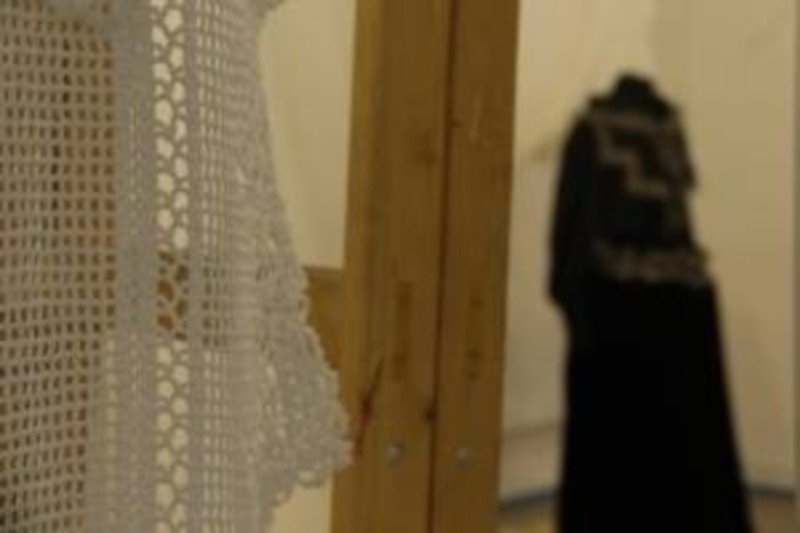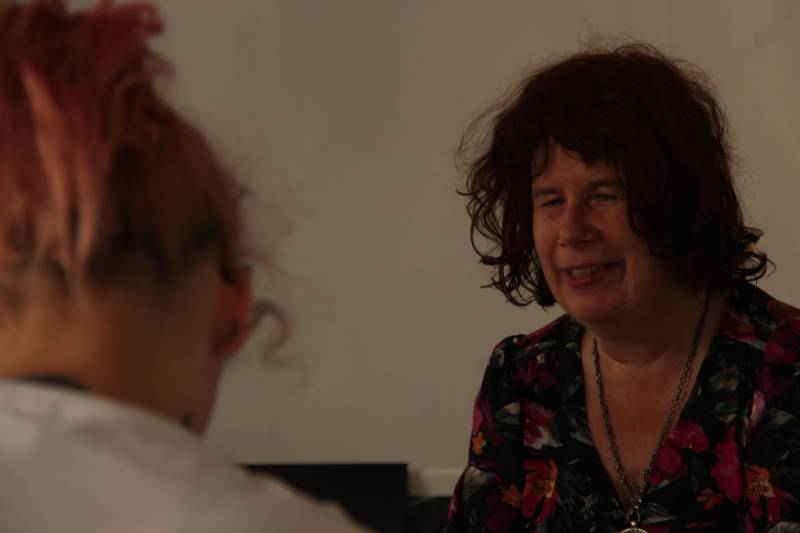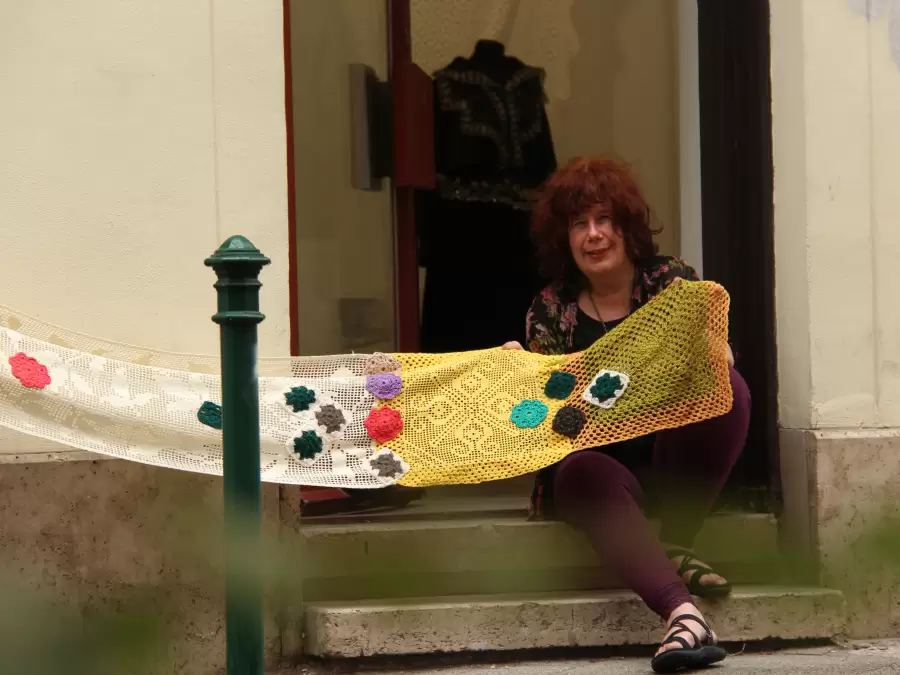As a teenager, Katariina Lillqvist discovered she had Roma heritage on both sides of her family – and quickly learned about the discrimination the Roma people community faced in Finland. What started out as a school project on Roma civil rights, turned into a career and mission: telling Roma stories through various mediums such as films, puppet theater, animations and exhibitions.
And now, from 22nd of August until the 7th of September, her project Heavy Lace will be on view at the Bura Gallery in Budapest. The exhibition, which is produced together with the textile artist and educator Helena Grönfors, is dedicated to the rich lace tradition of the Finnish Roma, as well as insights into the lives of the embroiderers. FinnAgora met with Katariina to talk about her expectations for bringing the exhibition to
Budapest.
Hello Katariina! Can you tell us a bit about yourself and your background?
I am a Finnish-born filmmaker and art-curator and have been living in two countries for most of my life, balancing work between Finland and former Czechoslovakia, now the Czech Republic. For the past seven years, I’ve worked as a curator for the Nordic Roma Museum, where I’ve organised various exhibitions, produced films for the museum and coordinated events like traveling music tours and cultural exchange with other Roma organizations. At the moment, I’m also involved in preparations for the 2026 European Capital of Culture project, where the Roma Museum will be one of the participating institutes here in Northern Finland.

What sparked your interest and dedication to these themes?
I was a teenager when I discovered I had Roma ancestors on both my father’s and mother’s side, and this sparked a curiosity. In the 1970s the Roma civil rights movement was very active, when the first social reports revealed the living conditions of the Roma minority. As you’ll see in the exhibition, the earliest documentaries from the 1960’s and 70’s show that many Finnish Roma families lived in near-slum conditions and abandoned train wagons – including in my own hometown in Tampere.
I felt that this was deeply unfair. At around fifteen, I wrote a school essay on the Roma rights movement in Finland. This somehow became a turning point: many of my classmates and even teachers told me they had never realized there was a Roma minority in the country. As a young filmmaker it came naturally to start making documentaries inside the Roma community; radio documentaries, short films and later also documentaries.

Now, what about the Heavy Lace exhibition – how was the idea to highlight lace born?
Our lace specialist, and the pedagogue at the Nordic Roma Museum, Helena Grönfors, has been crocheting lace since she was a little girl. She learned the patterns from her mother and grandmother, and as a child she would accompany the older women when they went out to sell their work. Lace-making remained an important source of income still into the 1950’s, 60’s and even the 70’s. By then, traditional Roma occupations for men – especially those connected to horsemanship – were disappearing due to major structural societal changes that had been taking place in the 60’s. So suddenly, selling lace became an important source of income and livelihood for many Roma families.
However, this was far from easy work. Creating the lace itself is time-consuming, and selling it from door to door in the rural villages could be dangerous. Many women tell similar stories: the farmers setting dogs after them, or even pointing guns to drive them away.
But at the same time, the lace was popular and highly valued. Farmer’s wives would order long curtains, or tablecloths for wedding presents and special occasions. The title Heavy Lace reflects both the heavy physical weight of carrying the lace, as well as the fact that this was quite a difficult profession in itself.
Today, the world has changed and handicrafts in general are disappearing. With this exhibition, we hope visitors will try lace making. This exhibition is one way to speak about the importance of making something with your hands – how nice it feels, and the mental benefits. Within the Roma community especially, it would be wonderful to spark a “lace renaissance”. Through our crocheting workshops, it’s been inspiring to see all kinds of youngsters come and do this, and embrace these traditions.
Previously, the exhibition has taken place in various places in Finland, as well as in Prague. Is there anything in particular you are excited about when the exhibition comes to Budapest?
I’m especially excited about the workshop possibility, for the community artwork “Lace Bridge.” In previous exhibitions, we’ve collected beautiful old pieces of lace, and hopefully we might discover some Hungarian Roma lace that we can attach to the project. I’m also looking forward to meeting local Roma communities and organizations. I think it’s vital that the institutes, like FinnAgora, are doing co-operations with the local Roma institutions, and setting an example for the everyday multicultural co-operations.

Also – I am looking for some contacts, because next year in Oulu, we’re planning a special workshop of the metalworking handicrafts of Roma men. In Finland, they were renowned for crafting cake moulds, as well as being creators of other kinds of kits and tools, and, of course the horseshoes and ironwork linked to horsemanship. So, I am hoping to talk to some locals, and find out whether Hungarian Roma are still practicing these skills.
I really hope you find the right contacts here in Budapest! So, when you are not networking or at the gallery – how will you be spending your time in Budapest?
I’m a big fan of Budapest’s historic spa houses, so I’m looking forward to spending a few hours soaking myself in those beautiful thermal baths!
Who: Katariina Lillqvist
Lives in: Prague and Pyhäjoki
Profession: Film director, curator, screenwriter
Harrastus: Hobbies: communicating with my rescue dog Kaiku and learning body language.
Heavy Lace exhibition:
Bura Gallery
22.8-7.9
The exhibition is realized in cooperation with FinnAgora – the Finnish institute in Hungary, with the Bura Gallery of Budapest, and the Oulu2026 European Capital of Culture project.

